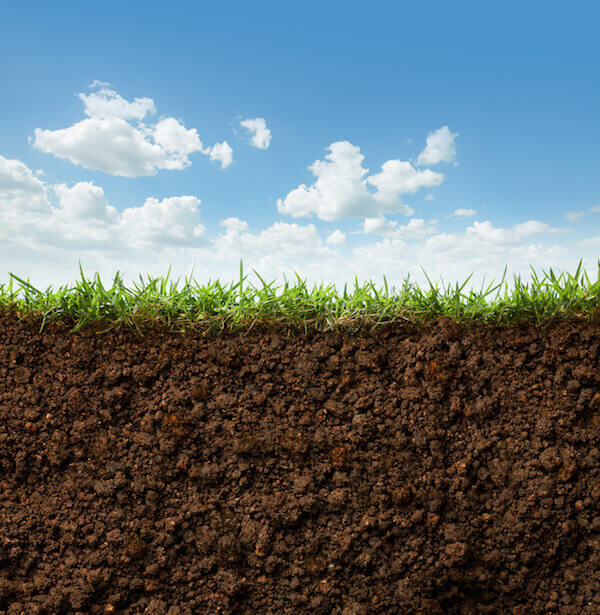
World Greener: Turf Grass to the Rescue!
Turf grass is pleasing aesthetically, but did you know that it is also better for our environment? Besides providing a foundation for some of our favorite activities and keeping our lawn looking and feeling great, turf grass plays an important role in our environment. In fact, the healthier the turf, the better it can protect the environment. Healthy turf grass reduces runoff, minimizes erosion, cleans the air, neutralizes pollutants, and absorbs rainwater. In this month’s “World Greener” piece, we will be discussing what soil erosion is and how turf grass effectively counteracts it.
Soil erosion is a naturally occurring process that affects nearly all landforms. It refers to the wearing away of a field’s topsoil by the natural physical forces of water and wind, or through forces associated with vital farming activities, such as tillage (the preparation of land for growing crops). Tillage is especially important to maintaining consistent and successful crop growth, so keeping an eye on your topsoil while tilling will create a balance between necessary, important cause and the possible effect of soil erosion.
Regardless of how the topsoil is worn away, the process involves three distinct actions: soil detachment, movement, and deposition. Topsoil, which is high in organic matter, fertility, and soil life, is relocated somewhere else “on site” where it builds up over time, or is carried “off site” where it fills in drainage channels. Soil erosion reduces cropland productivity and contributes to the pollution of adjacent watercourses, wetlands, and lakes—all of which are in abundance in Florida, so introducing sod to more of our environment to counteract soil erosion is vital.
The process is can be slow, and can continue relatively unnoticed, but under certain circumstances, can also can occur at an alarming rate, which causes a serious loss of topsoil in a shorter amount of time. Many other soil degradation conditions can accelerate the erosion process, including soil compaction, low organic matter, loss of soil structure, poor internal drainage, salinization, and soil acidity issues.
Soil loss is one of the most important, yet one of the least well-known of today’s environmental problems. It falls under many headings and is addressed by geomorphologists, agricultural engineers, soil scientists, hydrologists and others; it is also of interest to policy-makers, farmers, environmentalists. It’s also of interest to policy-makers, farmers, environmentalists, and many other individuals and groups.
Turf grass helps prevent this phenomenon in many ways, as it is tightly-knit and keeps topsoil from blowing away. The roots weave the soil together, preventing it from moving. It is, to some, considered the earth’s “living skin”; its clean and gentle strength is the most cost-effective method for controlling wind and water erosion. In fact, a healthy sodded lawn absorbs rainfall six times more effectively than a wheat field and four times better than a hay field. Also, a sodded lawn will absorb greater amounts of rain than a seeded lawn, even after three years of growth. After absorbing that water, turf areas make it cleaner. With healthy turf, water will pass through the root zone and return it to our aquifers.
Consider it a way of “recharging” our groundwater supplies. The grass leaves and stems cover the soil, and then intercept raindrops as they fall and interfere with runoff flow, slowing it to the point where soil particles have a chance to soak it in. In fact, water runoff from sod lawns is rare, because the average 10,000 square-foot lawn has the ability to absorb more than 6,000 gallons of water from just a single rainfall event.
Something else to consider is that turf grass is typically a perennial plant, which means that part of the root structure dies off during the winter, and grows back the following spring. The dead roots of the plant break down, providing organic matter to the soil. The breakdown of clippings from regular mowing also adds organic matter in the same way. Over time, that organic matter improves the quality of the soil, making it more fertile and better able to filter air and water.
With the benefits of turf grass working their wonders for us, we will be able to share a beautiful and healthy planet with our future generations. Stay tuned for our next monthly installment of our “World Greener” series and let us educate you on how sod can improve your community and the greater environment.